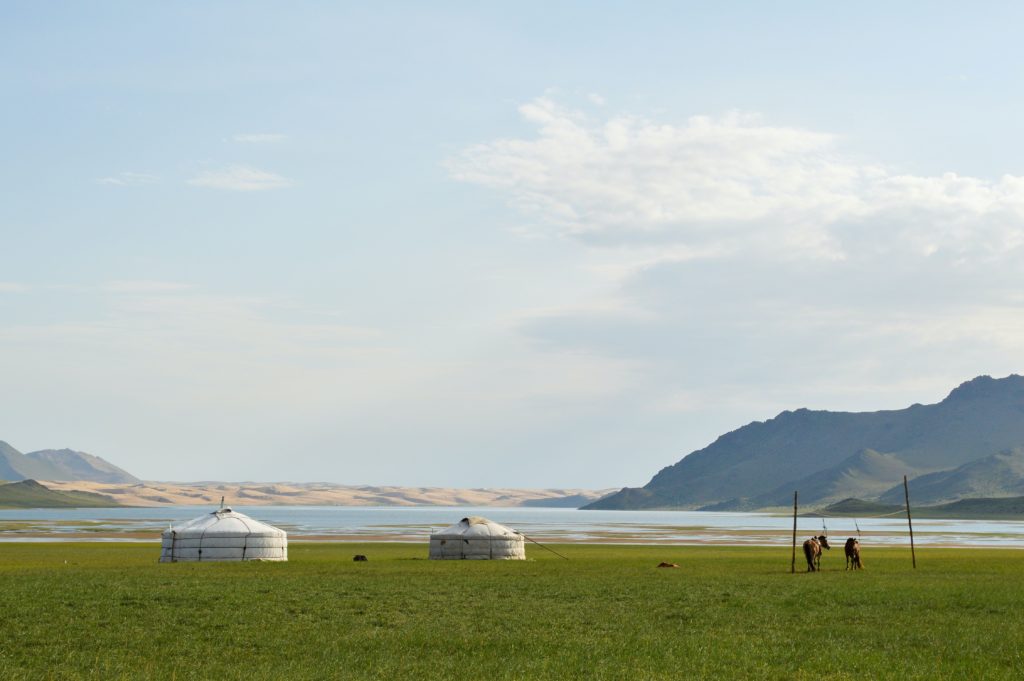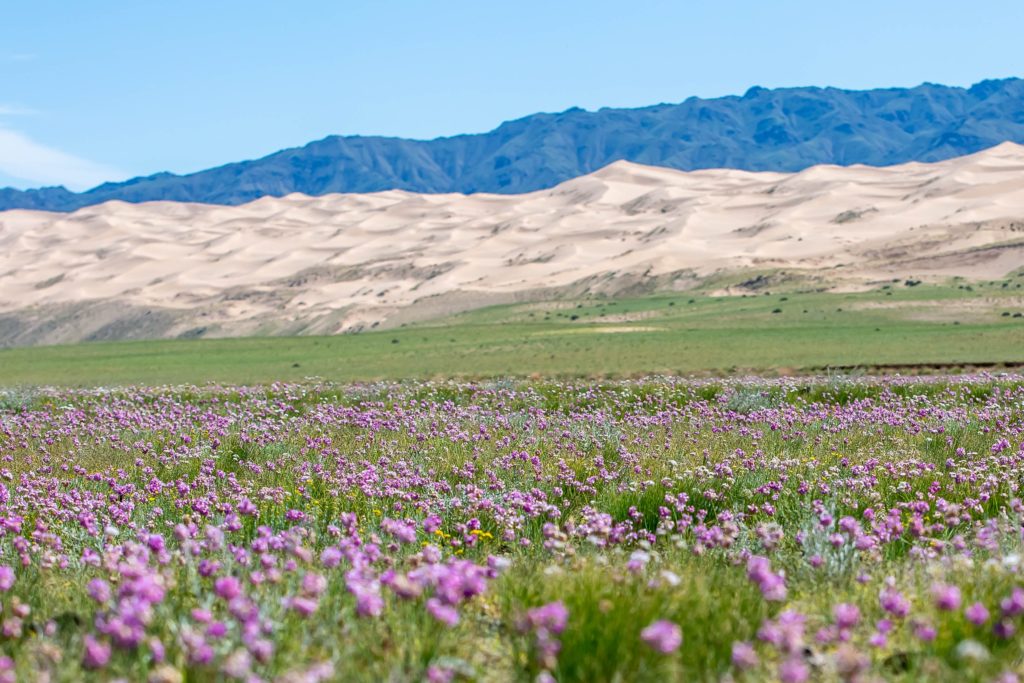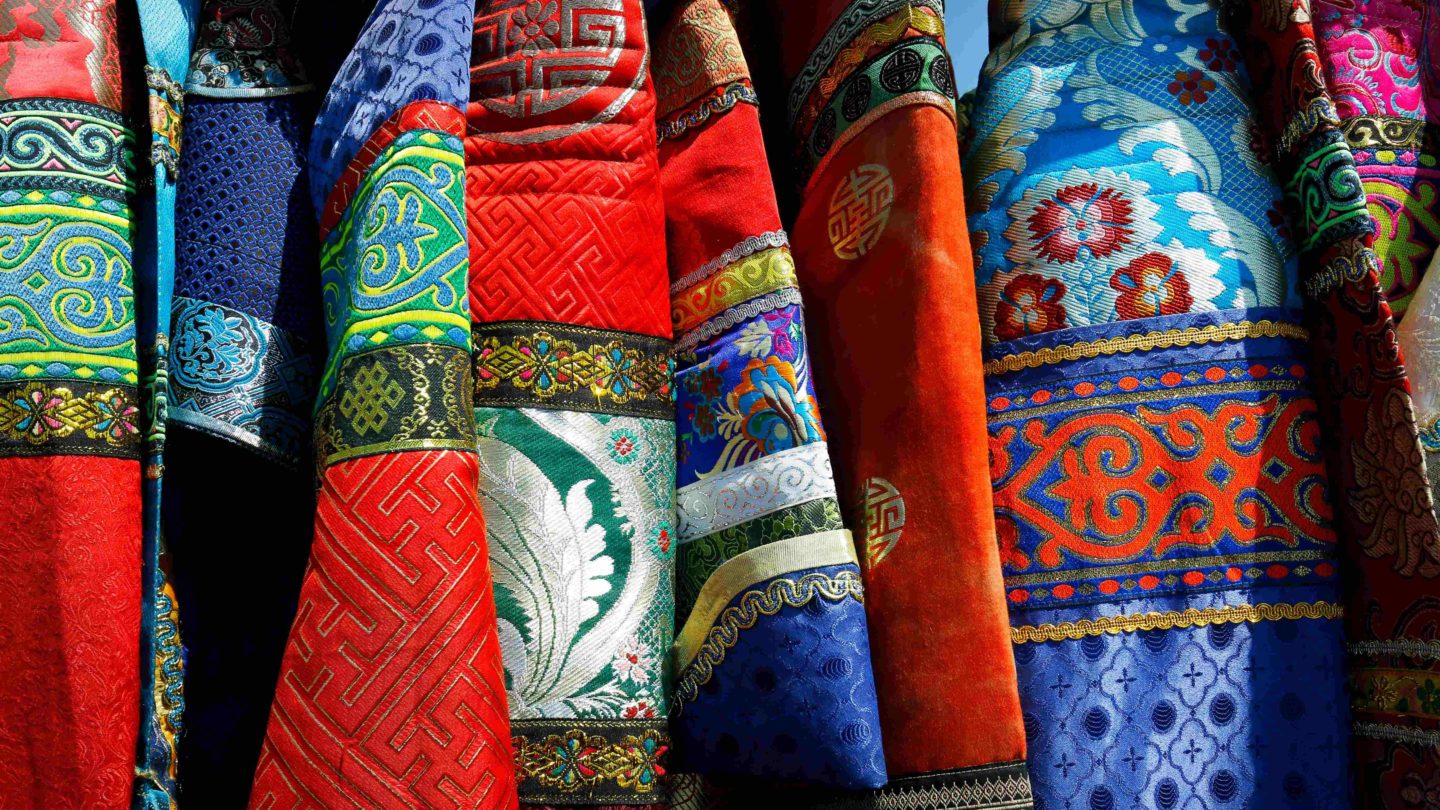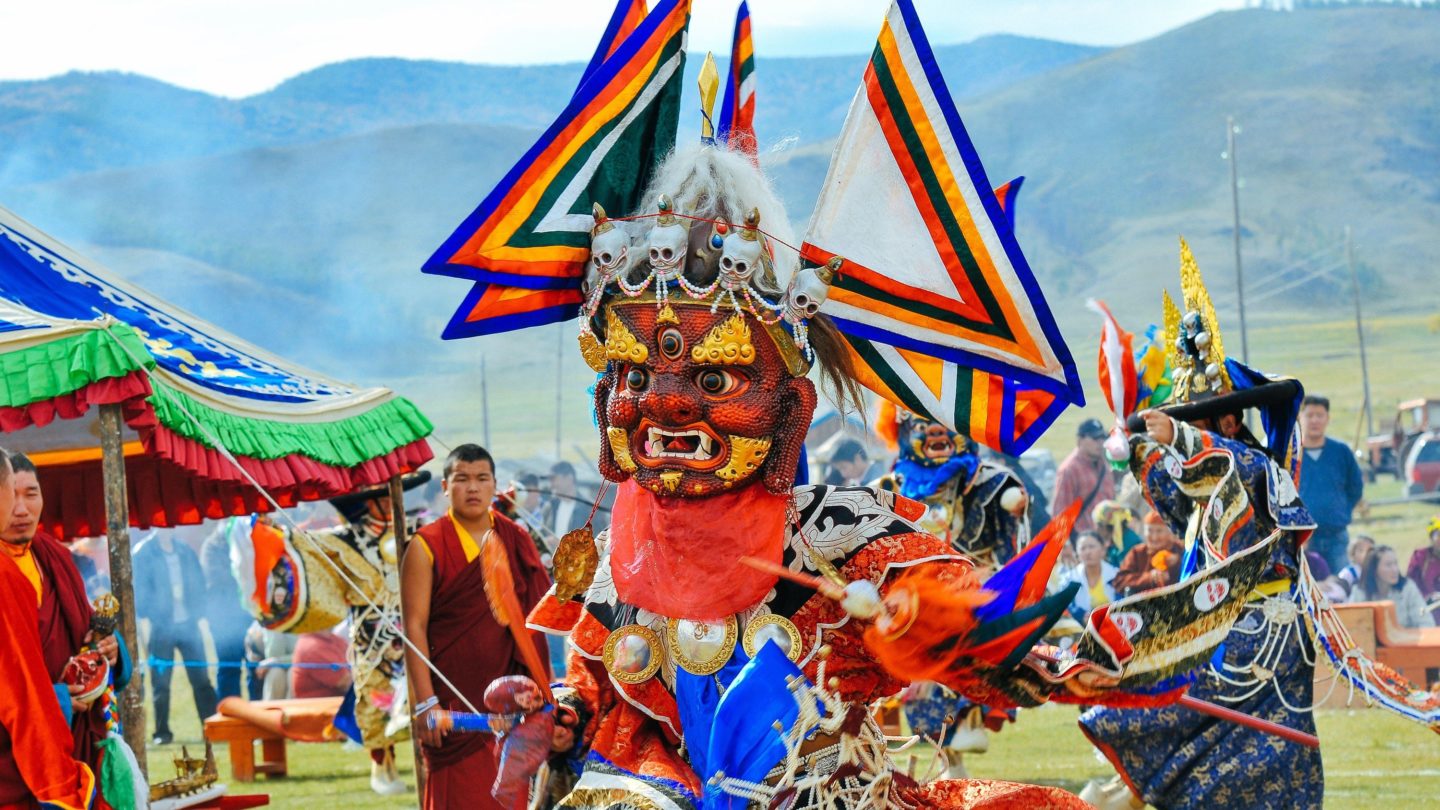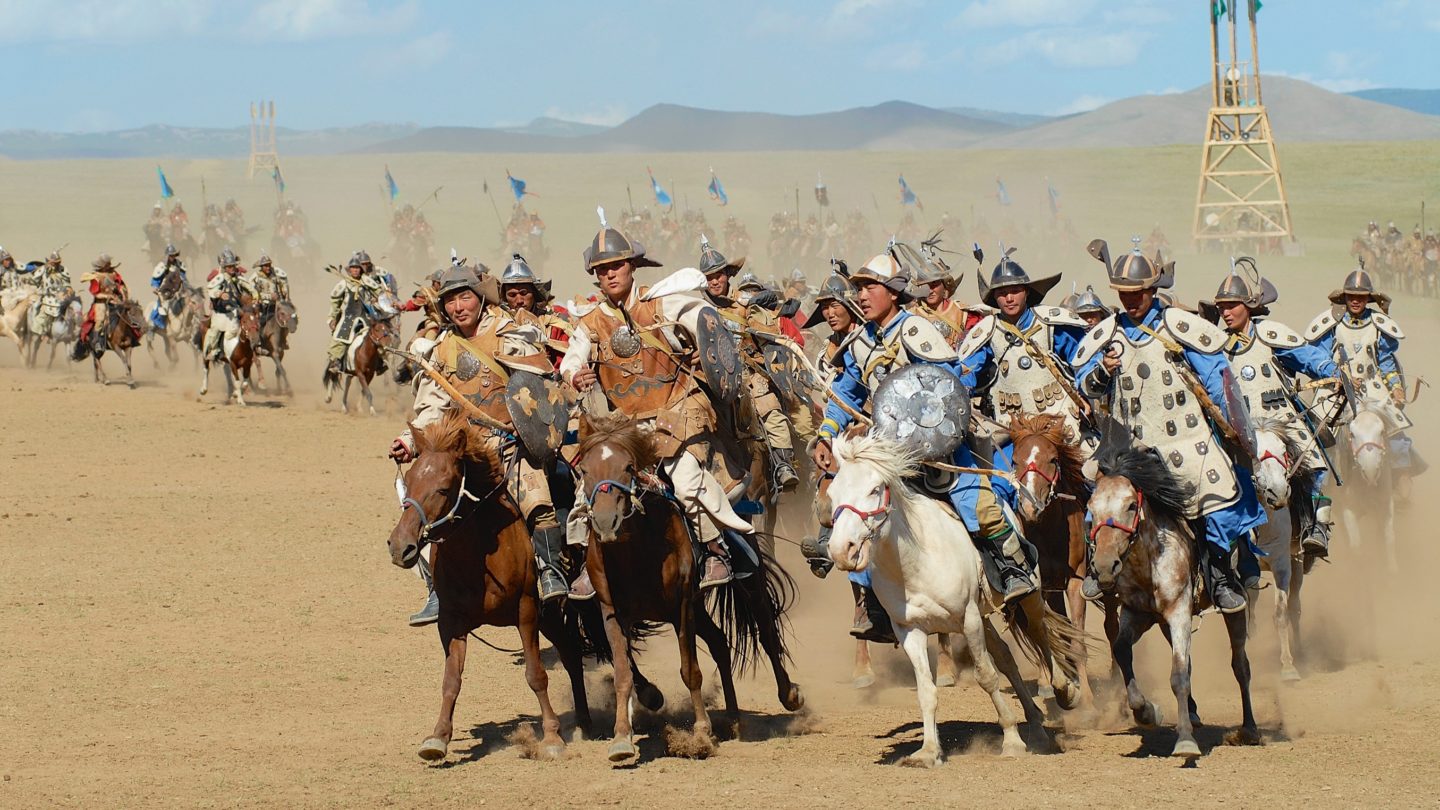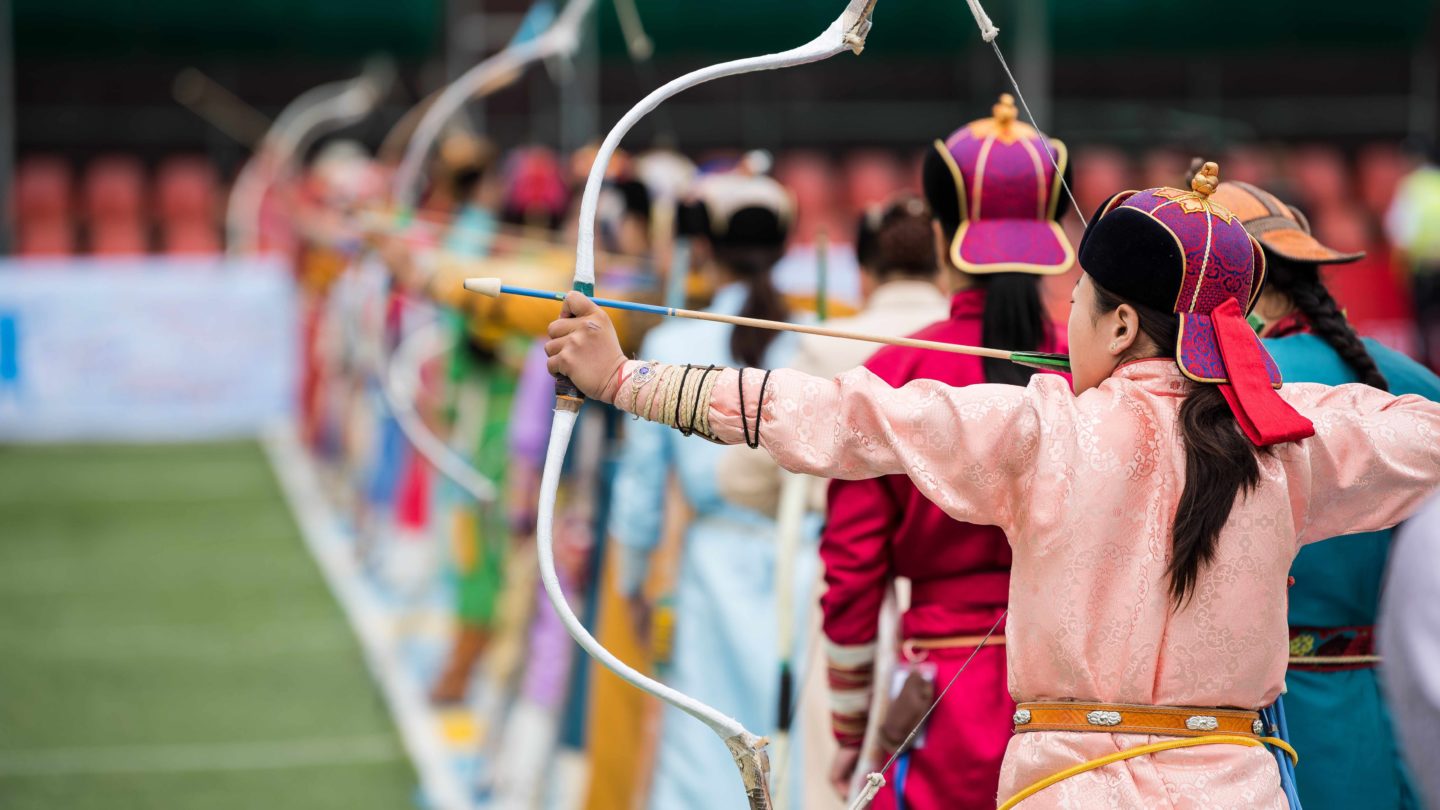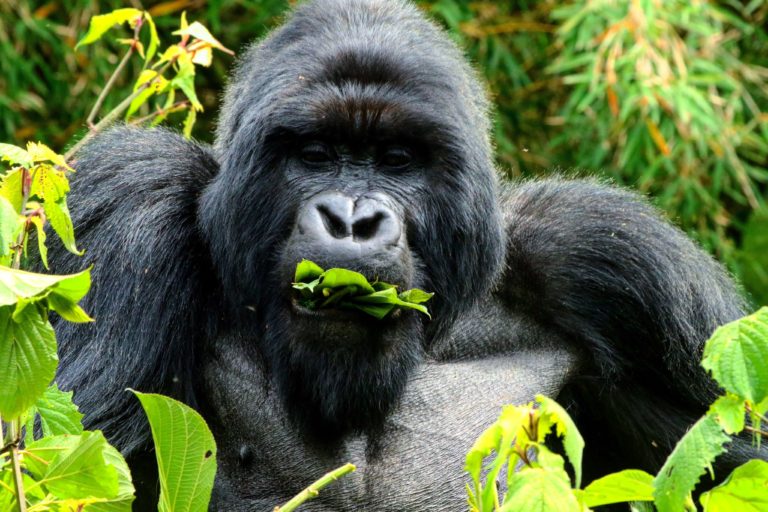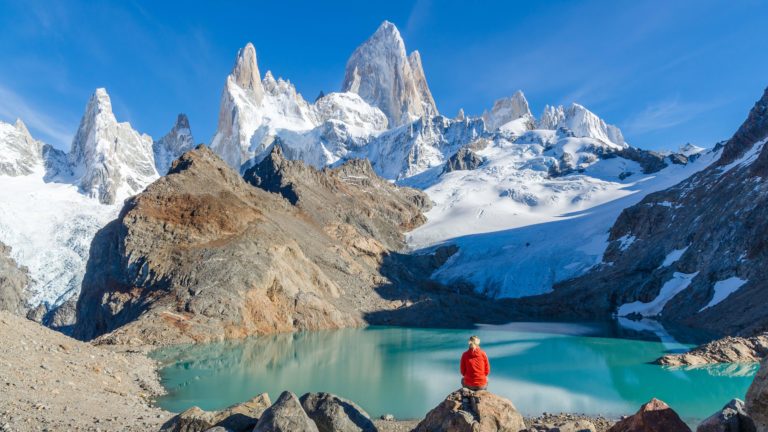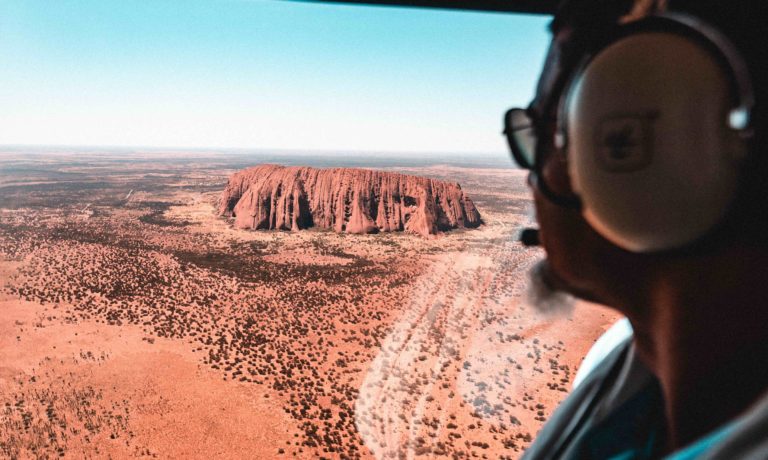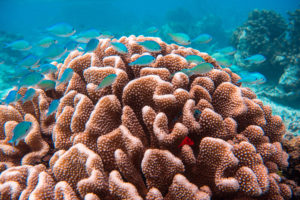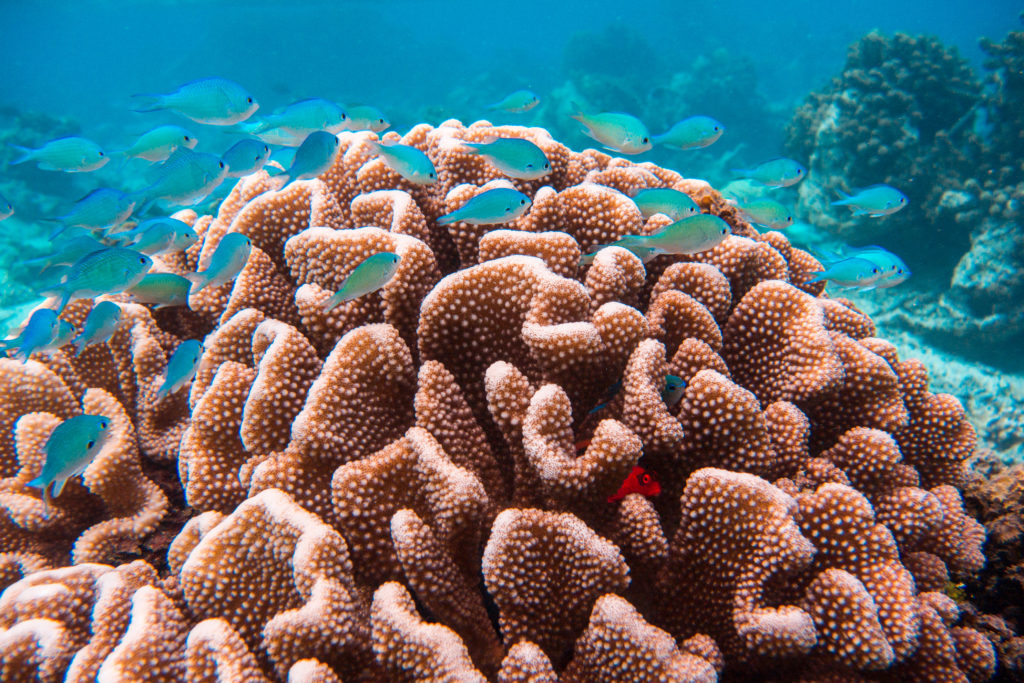Finding peace in the
Land of the Blue Sky
Mongolia
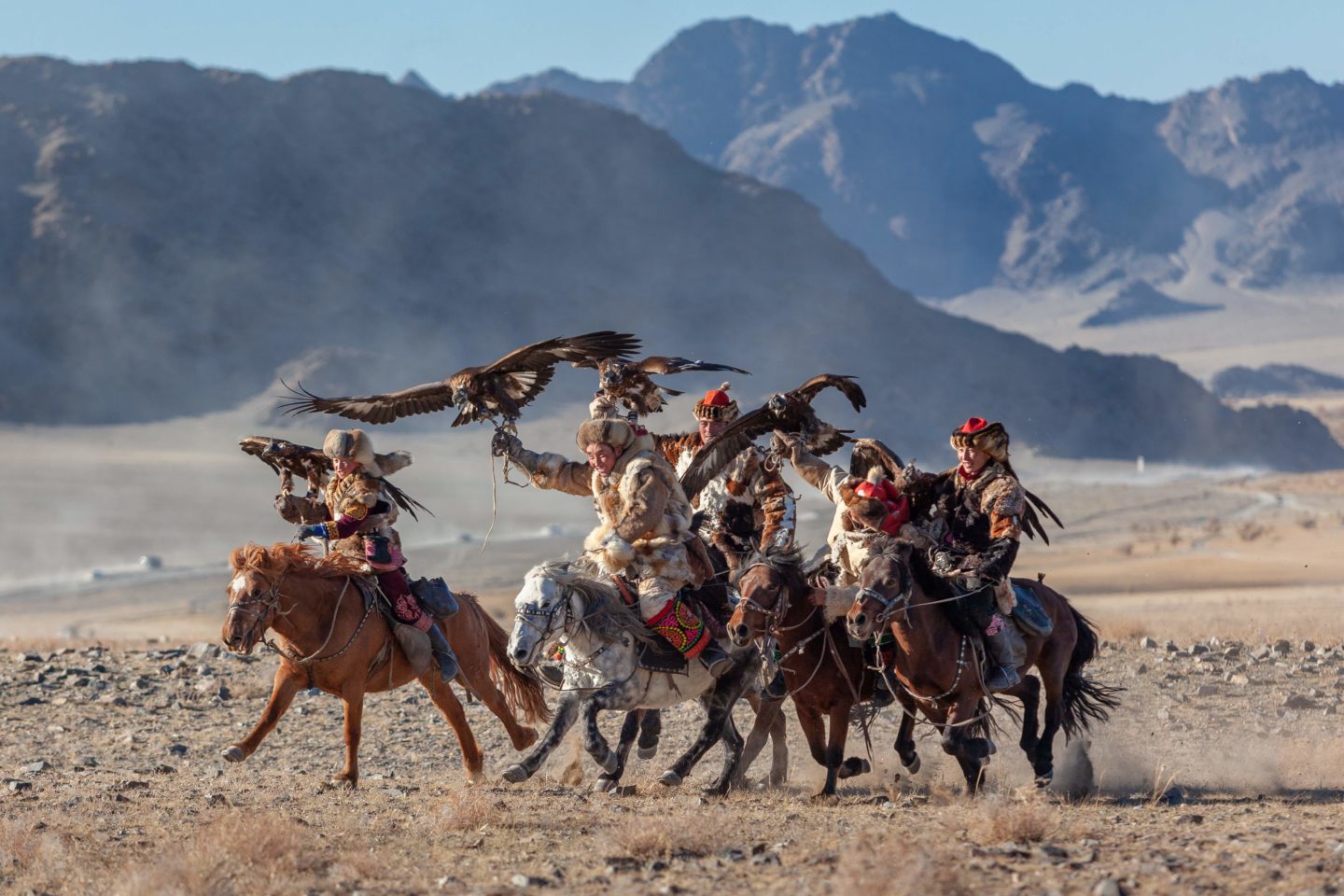
Galloping on horseback like Genghis Khan across golden dunes, the endless expanse before me, the wind in my hair. And when night falls, stargazing in the desert before snuggling up in a cosy yurt. That was how I pictured my Mongolian adventure. And it’s what I got. Almost. True, the unusually hot temperatures prompted my pony to take a dip in a waterhole so I had to unexpectedly do the same. But amid this vast empty space that was not made to inhabit people, I would find an impressive silence and inner peace.
In harmony with nature
Mongolia is still a land of nomads. Roughly one third of the population leads a nomadic lifestyle, just as their ancestors did. Their traditional tent-like dwellings, called gers (yurt is the name used in Central Asia), can be quickly dismantled so can be easily moved along with livestock. The painted doorway faces south, welcoming light while providing protection from the wind, and it’s customary to walk in without hesitation. Inside there are usually no walls (a family lives altogether in one open space) and you’ll likely be offered a meal, often with a bowl of fermented horse milk. There’s something rather special about sleeping in a ger, even one that’s there only for foreign visitors.
But staying in a ger is only one element of the Mongolian experience. A journey through the hidden wonders of these vast landscapes will reveal the true essence of this captivating destination. You might catch a glimpse of a herdsman on horseback, skilfully guiding his flock across the plains only to see them vanish over the next hill. And if you thought edelweiss and gentian were exclusive to the Alps, prepare to be amazed by the wildflowers in June.
The middle of nowhere
It’s baking in summer and freezing in winter, and its name means ‘waterless place’ in Mongolian. Welcome to the Gobi Desert. As inhospitable as it sounds, this huge desert is home to many animals such as wild Bactrian camels, black-tailed gazelles, even the occasional snow leopard or bear. The best way to explore the sand dunes is slowly rocking, seated comfortably between the twin humps of the gentle camels. And there’s very little chance you’ll end up taking a surprise swim.
Fossils and Flaming Cliffs
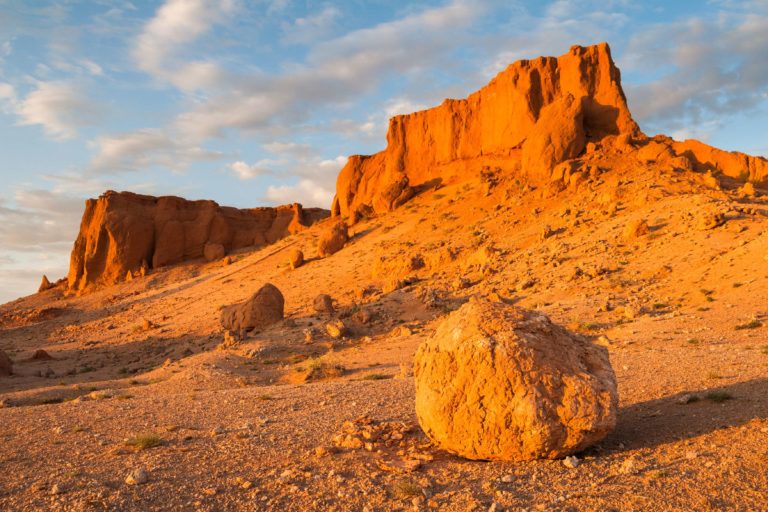
Fossils and Flaming Cliffs
In the 1920s American palaeontologist Roy Chapman Andrews made the first discovery of dinosaur eggs, plus complete skeletons, here. To this day you can still stumble across fossils lying around in the sand – but don’t take them with you. Andrews also named the Flaming Cliffs, which positively glow at sunset. They won’t warm you up but a sundowner will do the trick: sitting out in the middle of the Gobi you can enjoy the intense colours of the setting sun. And then be wowed by the bright sea of stars overhead once the darkness swallows the light.
Such festivals are how Mongols celebrate their heritage. Whether it’s one for the Thousand Camel or one for the Golden Eagle, it feels as if these traditions have remained unchanged for millennia. And they show that there’s more to Mongol history than one man. Yes, Genghis Khan is the most famous Mongol ever, thanks to his mighty empire in the early 13th century, and sadly his accomplishments are overshadowed by the path of blood he left behind. His hordes terrorised half the world but he also granted his subjects religious freedom, abolished torture and created the first international postal system.
Childhood dream
come true
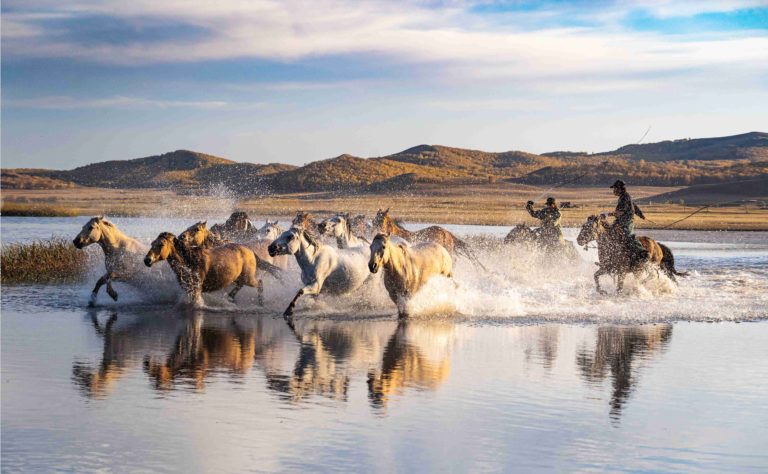
Childhood dream
come true
I did really get to gallop the dunes, wind in my hair but sitting firmly in my leather saddle. Unlike Genghis Khan and his men, I didn’t have to stand in the stirrups of a wooden saddle with uncomfortable brass fittings designed to keep the riders up and awake. A local saying goes ‘a Mongol without a horse is like a bird without wings’. In the vast empty steppes of Mongolia, on the back of a local pony, I not only found my wings but also inner peace and happiness. And couldn’t help but wonder if Genghis could have said the same.
Written by: Annina Sommer on 11 December 2023

Our annual Inspirations are so great, they get their own seal of approval. Wherever you see this compass logo on an article, it means that we’ve chosen it as one of our Inspirations. All seven Inspirations for 2024 appear on this special map.
You can discover all of Cosa’s inspirations for 2024 here. Or if you’d like to know more, please contact us directly.












